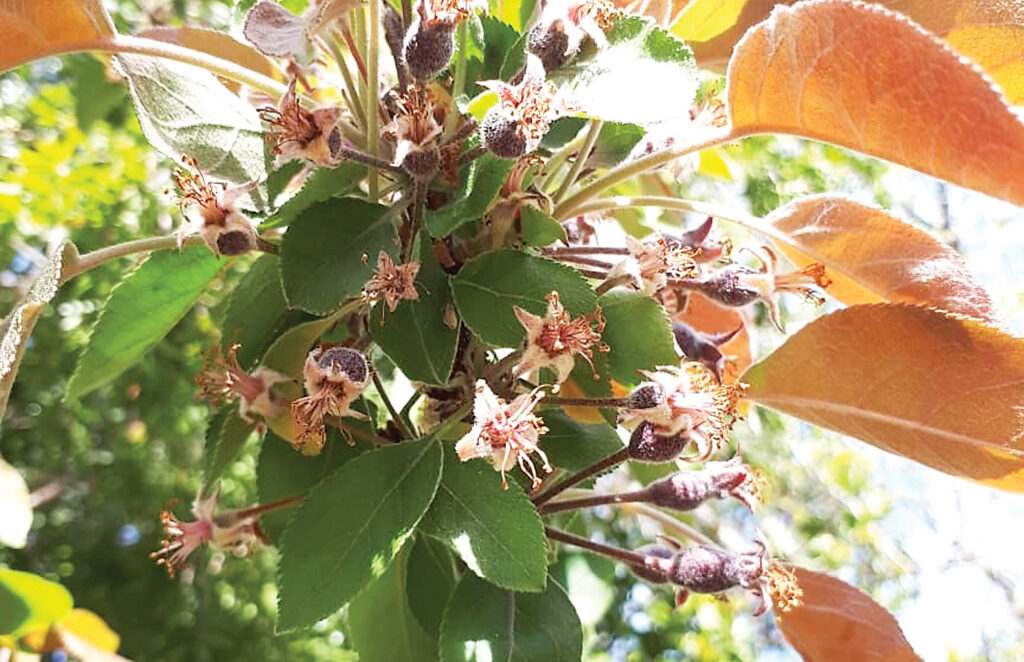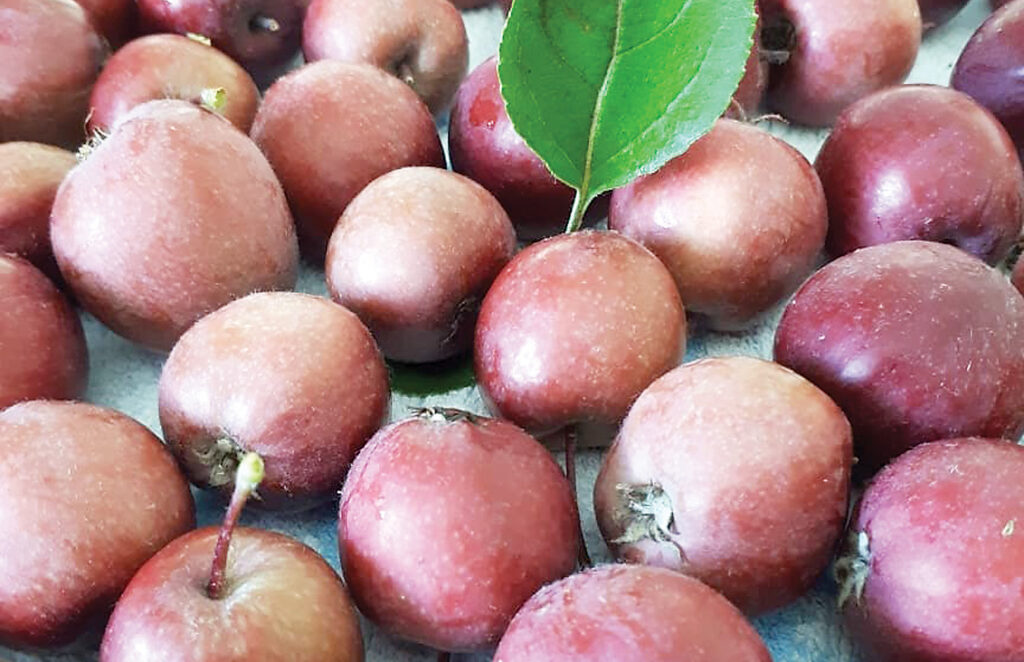
Apple species can be traced to Tian Shan, a region of Kazakhstan; an independent nation bordering China. There are approximately 30 species to the Malus genus belonging to the Rosaceae family. Our common apple – Malus domestica, has evolved by cultivating and domesticating Malus sylvestris – the crab apple and its biological parent Malus sieversii.
We are fortunate through the efforts of a few dedicated growers, some in Gippsland, providing consumers a wide range of apple cultivars. There are juicy, floury, crisp, and soft textures. It is sad many consumers are unaware of the many varieties we grow in Gippsland, Yarra Valley, Goulburn Valley and Petty’s Orchard in Templestowe. Could this be because consumers rely on mainstream food outlets?
One of Australia’s favourite apples is the Granny Smith, a uniquely cultivated variety in the mid-1800’s by Maria Ann Smith, a Sussex born, UK immigrant of North Sydney.
Growing apples
If you decide to grow apples, winter is the best time to purchase bare root fruit trees. The trees are professionally grafted onto selected root stock ensuring consistent fruit. Growing from seed is not viable, it is hit and miss. Nurseries sell dwarf and columnar trees that are suitable for small spaces. Standard varieties are available for larger gardens. Most apple trees require a pollinator to successfully produce fruit (two different compatible varieties planted close by). Monoecious plants self-pollinate, dioecious plants are either male or female. Prior to purchase, check with the nursery. Self-fertile trees do not require a pollinator.
Where to find
Hazeldean Forest Farm, Strzelecki` Heritage Apples, Heritage Fruit Society, Picnic Point Farm and PlantNet (located in Queensland providing plant care and other related fruit tree information) offer heritage varieties and various apple products. Hazeldean’s apple cider vinegar is seriously delicious. Grower’s produce is often available from visiting local community markets.
Pests and disease
Apples are prone to pest and disease. Soil preparation a few months prior to purchase provides a healthy environment reducing disease. Good soil equates to delicious fruit. Codling moth, aphids, fruit fly, pear and cherry slug, woolly aphid and powdery mildew are a few pests and disease.
Nutrition
Apples are a good source of phytonutrients in the form of antioxidants. Pectin assists with unbalanced cholesterol levels. It binds heavy metals from absorbed pollution to transport safely out of our body. Apples are delicious and can be eaten raw, cooked, stewed, barbecued – or baked into strudel or pie. Crab apples are too bitter to eat; they are best prepared into jelly, easy to make and delicious on almost most sweet and savoury dishes. Pairs nicely with cheese.
One of my absolute favourite is the apple sandwich. Thinly slice an apple and preferred cheese, alternate layers on good quality sourdough bread, I usually do three layers of each and you have made yourself a very delicious snack. Toast the sandwich and lightly butter the bread. Delicious!
Apple’s history
The Roman Empire loved to conquer what they could back in the day. Whilst on their journey into Britain, they brought in apples and spread them throughout their travels. As time passed by, apples continued an evolutionary process in Britain. When Henry VIII reigned, he ordered his fruitier Richard Harris to introduce new species into his orchard at Teynham, Kent. This action saved many varieties from probable extinction. Supplying a wide selection of species enabled nurserymen who were employed by the large estates to concentrate on creating new apple varieties. Let us be grateful to Henry VIII (on this occasion) and his nurserymen and estate owners determined in their apple innovation pursuit. Without their concentrated efforts the apple’s gene pool faced an uncertain future.
Post WW2 agricultural practices in orchard production improved with the aid of chemicals controlling pest and disease. As new rootstocks were introduced, nurserymen grafted selected varieties considering manageable tree height at harvest. This reduced the need for tall ladders as apple trees grow quite tall. Commercial picking and pruning involved intense labour that increased production costs. The non-commercial varieties were put aside for maintaining gene stock.
Companions
Apple trees companion favourably with nasturtiums, scented pelargonium, borage, wormwood (pest repellent), tansy, white clover, and foxglove.
Great resources to read up are All About Apples – Allen Gilbert, and The Complete Book of Fruit Growing in Australia – Louis Glowinski, both Australian authors.

